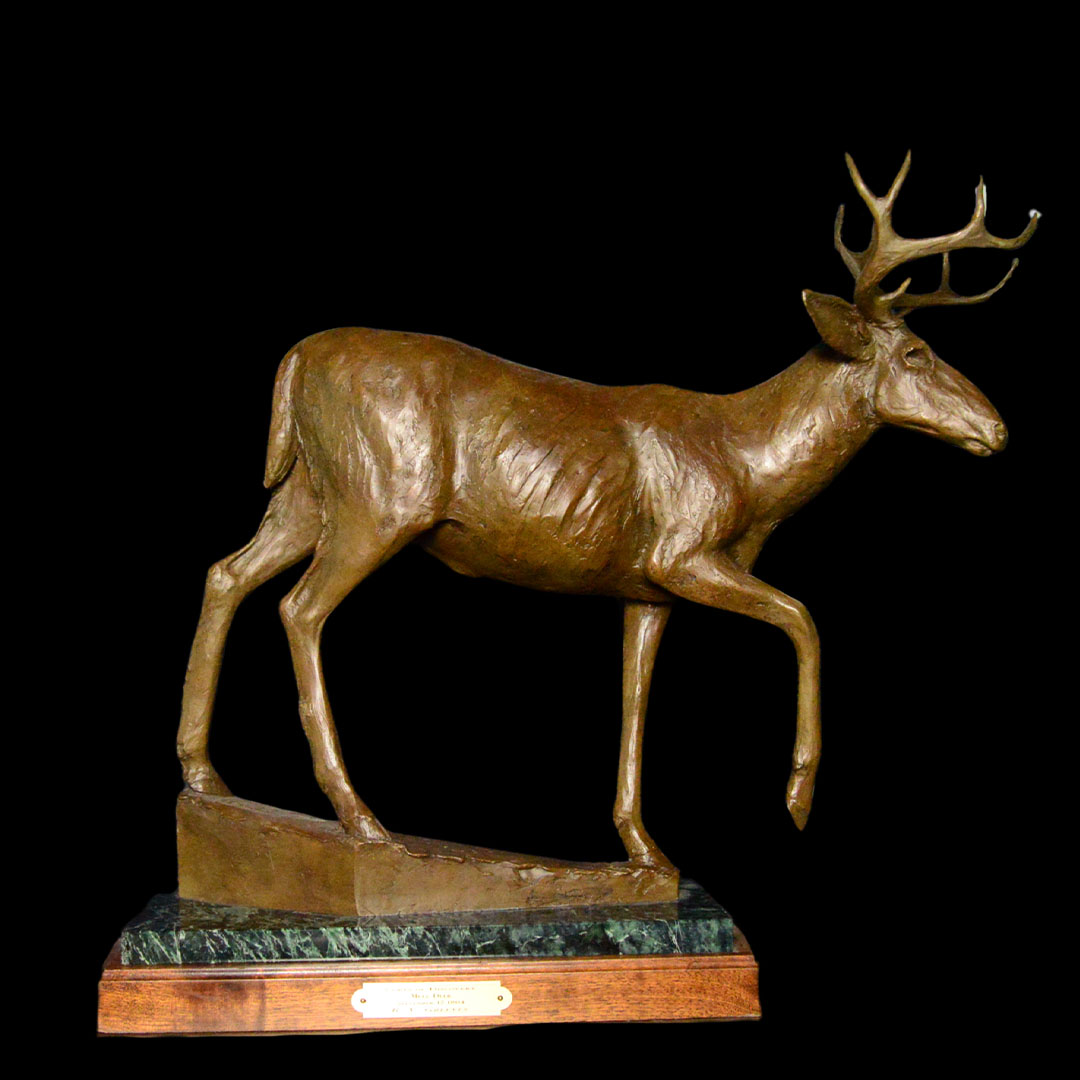Stillness in motion—a quiet sentinel of the American plains.
Richard Vernon Greeves
Contemporary

“Mule Deer – September 17, 1804” by Richard Vernon Greeves captures a fleeting yet timeless moment on the vast, unsettled plains of early America. Sculpted in bronze with subtle texture and anatomical precision, the figure steps lightly but deliberately—alert, aware, and entirely at home in its landscape. The date references an entry from the Lewis and Clark journals, when a mule deer sighting was recorded during their westward expedition.
In this piece, Greeves bridges wildlife and history—rendering not just an animal, but a symbol of life observed and recorded through the eyes of early explorers. The tension in the limbs, the forward gaze, and the gentle slope beneath the hooves speak to both natural grace and the quiet tension of the wild.
Whether appreciated for its naturalistic form or its historical reference, this sculpture stands as a tribute to the enduring presence of wildlife amid America’s early frontier. A thoughtful addition for collectors drawn to Western themes, wilderness, and master-crafted bronze.